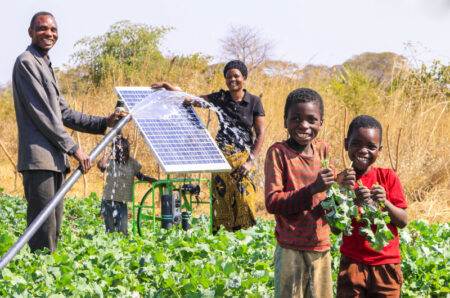- The multi-phase project will provide water to the Gauteng region of South Africa and generate hydroelectricity for Lesotho.
- The Lesotho Highland Development Authority will implement the part of the project that falls within Lesotho’s borders.
The board of directors of the African Development Bank Group has approved a loan of $86.72 million to co-finance the second phase of the Lesotho Highlands Water Project.
In a statement, AfDB said the multi-phase project will provide water to the Gauteng region of South Africa and generate hydroelectricity for Lesotho.
The project entails harnessing the waters of the Senqu/Orange River in the Lesotho highlands by constructing a series of dams for the mutual benefit of the two countries.
The Trans-Caledon Tunnel Authority, a state-owned entity in South Africa charged with financing and implementing bulk raw water infrastructure projects, will use the funds to construct the Polihali Dam and reservoir, a 38 kilometer-long water transfer tunnel, roads and bridges, telecommunications infrastructure, and to extend electricity and other development infrastructure to Lesotho.
The new construction will complement facilities built during the project’s first phase. The Lesotho Highland Development Authority will implement the part of the project that falls within Lesotho’s borders.
Kenya, Lesotho sign three deals to ramp up bilateral ties
Commenting on the development, Beth Dunford, African Development Bank Vice President for Agriculture, Human and Social Development said the two governments’ partnership on the project around the shared water resources from the Orange-Senqu River Basin serves the interests of their mutual development agenda and also deepens regional integration.
“The intervention will be the first major project to be financed by the Bank in the water sector in South Africa and it will complement the Bank’s current support in the energy and transport sector, diversify the Bank’s portfolio and consolidate the Bank’s strong partnership with the country,” she added.
Once completed, the project is expected to boost transfer capacity between Lesotho and South Africa to 1,260 million cubic meters/year, up from the current 780 million cubic meters/year, and enable additional generation of hydroelectric power in Lesotho.

Expected project benefits include greater water security in South Africa’s Gauteng region and a boost to Lesotho’s socio-economic development due to infrastructure improvements and increased hydropower capacity.
These developments are expected to positively impact 26 million people in South Africa and boost a region that accounts for 60% of the country’s economic output. In Lesotho, the project will benefit more than 85,000 people in the project area, and generate more than 6,000 jobs over the next six years.
Lesotho’s economy will also receive a boost from the royalty payments it will receive for water transfers.
The project, with a total cost of $2.171 billion, is also receiving financing $213.68 million in loans from the Shanghai-based New Development Bank.
The South African government will contribute $1.871 billion as well as a loan guarantee. The first phase of the project was completed in 2003 and inaugurated in 2004.
To date, the African Development Bank Group’s active portfolio in South Africa comprises 23 operations with a total commitment of about $4.5 billion in financing.
The new funding comes weeks after the bank’s African Development Fund approved a loan of around $116 million to the Tanzanian government to upgrade a 160-km Mnivata-Newala-Masasi road corridor in the southern part of the country.
According to the bank, the loan represents 98.71% of the project cost; the government of Tanzania will provide the remaining 1.29% in funding.
The project will upgrade the roadway, including the 84-meter Mwiti bridge, to bituminous standard.
The works also have social components, including the provision of potable water, education and medical infrastructure, the establishment of cashew nut processing units, and extension of entrepreneurial training to women and youth.
The upgrade is expected to open up rural areas in the region and enhance the Mtwara Development Corridor, which links Mtwara Port and Mbamba Bay port on Lake Nyasa.
Exporters, importers, small-scale cross-border traders, farmers, transporters are all expected to benefit.
“The periodic isolation of such a significant population worsens vulnerability and undermines social inclusion. Improved road connectivity would therefore build the resilience of the people and widen livelihood opportunities within the Mtwara Development Corridor and the surrounding districts,” Bank Director General for East Africa Nnenna Nwabufo said.
Overall, the five-year project will improve mobility and accessibility for about 1.1 million people in Mtwara, Tandahimba, Newala and Masasi districts and facilitate integration with neighbouring Mozambique, Malawi and Zambia.
AfDB extends $4.25 million loan to modernize tax collection, boost revenue in Lesotho











